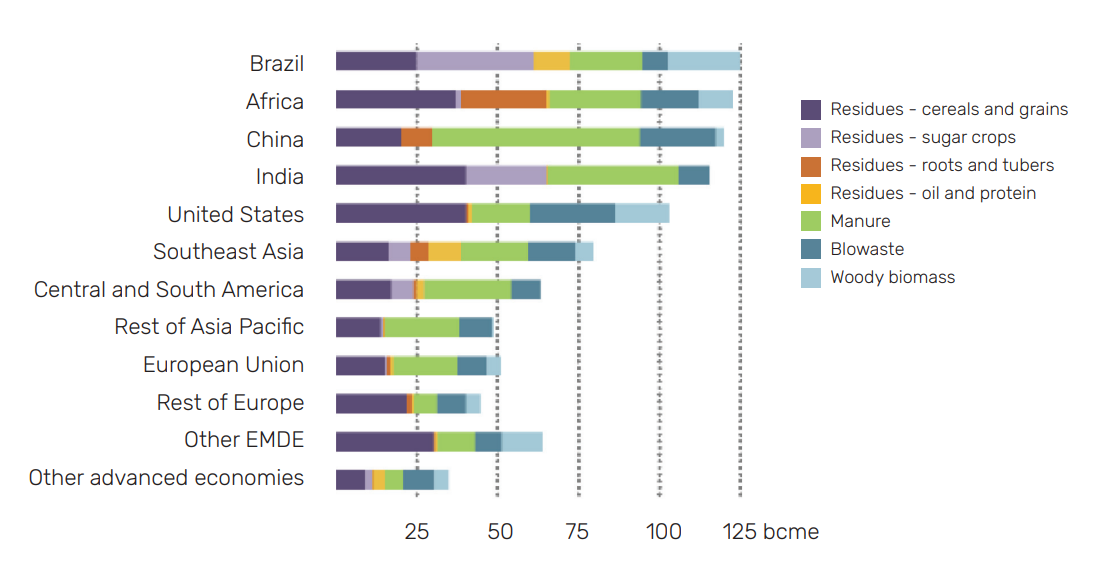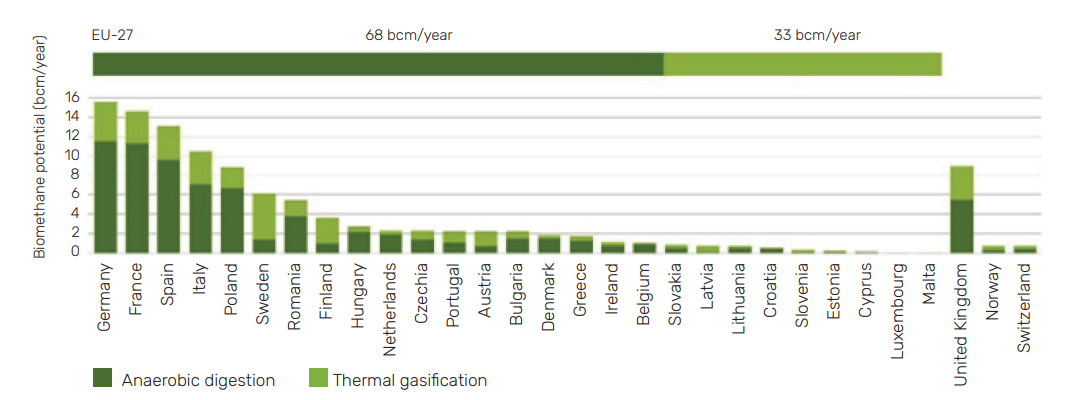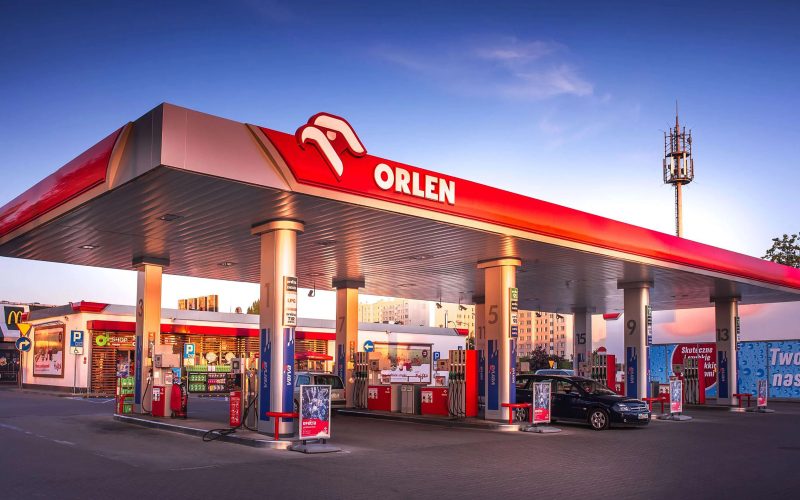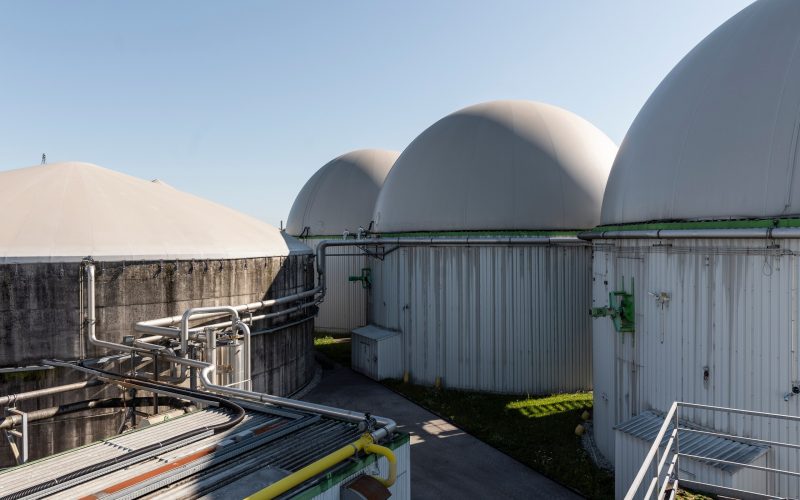Biomethane production from crop residues: overview of the current state and prospects for use
Agricultural residues are materials that are left over in the field, following the harvesting of the main crop (e.g. cereal straw). Crop residues together with animal manure are the largest sources of feedstock for all regions.
For the SAF platform, we have prepared an overview of one of the chapters of Analytical Note No. 2: Advanced biomethane production from ligno-cellulose materials on the current status and prospects of using crop residues for biomethane production.
Potential in the world and EU-27
Every part of the world has significant scope to produce biogas and/or biomethane. The biggest potential belongs to Brazil, Africa in total, China, India, and the United States. The potential is formed by plant residues including cereals and grains residuals, sugar crops, roots and tubers residuals, and oil and protein production residuals, livestock waste, other biological waste, and woody biomass for thermal gasification.

The EU-27 potential in 2030 was estimated to be 41 bcm, increasing to 151 bcm in 2050 if the full sustainable biomethane potential can be realised. The estimated potentials for the EU27 plus Norway, Switzerland and the United Kingdom was 45 bcm in 2030 and 165 bcm in 2050.
Biogas and biomethane production in the EU
Total production of biogas and biomethane in 2023 amounted to 22.1 bcm or 234 TWh of energy. While biogas production remains important and relatively stable, biomethane is the fastest-growing segment of the market. Europe’s production capacity for biomethane grew from 5.5 bcm/year in 2022 to 6.1 bcm/year in 2023 and 6.4 bcm/year by the first quarter of 2024.
Key technologies for biomethane production
Two main biomethane production technologies include anaerobic digestion combined with upgrading the biogas, and gasification. Almost all biomethane in Europe today is produced via anaerobic digestion. Thermal gasification with biomethane synthesis is currently at a demonstration scale. Hydrothermal gasification is at an industrial demonstration stage, with initiatives underway in several European countries. The potential to scale up both technologies is large in the medium to long term (2030 and beyond).
Agricultural residues are suitable for either anaerobic digestion or thermal gasification. However, in the context of this study, the feedstocks have been assigned to anaerobic digestion only, which is already commercially deployed at scale. However, in the future, hydrothermal gasification can further extend the scope of feedstocks suitable for biomethane production including agricultural residues.

Read the full material with more information about the potential by 2040 and production costs on the SAF platform.
We remind you that UABIO is a partner of the Sustainable agribusiness platform (SAF).
SAF is a communication platform that brings together agribusiness stakeholders and aims to establish strong links between market players and introduce sustainable approaches in agriculture. For this platform, our team prepares verified professional content on the bioenergy sector.


